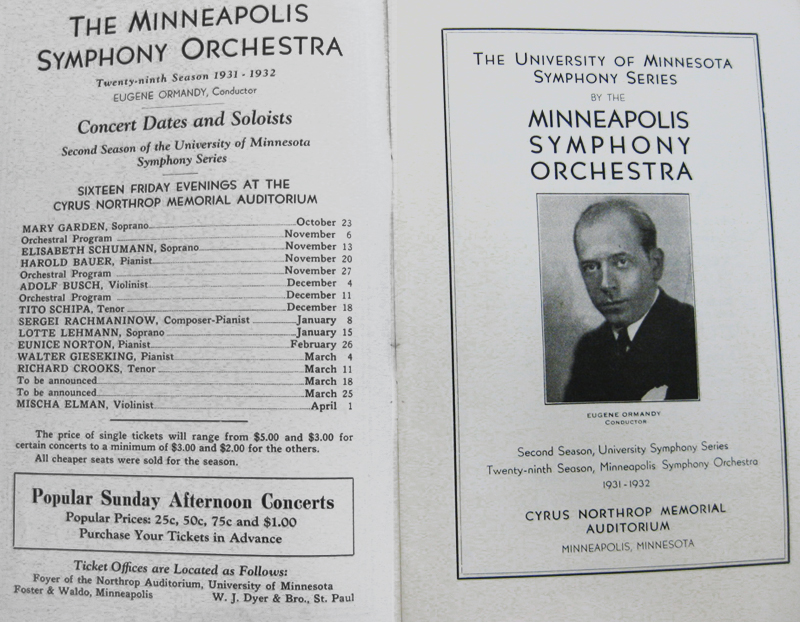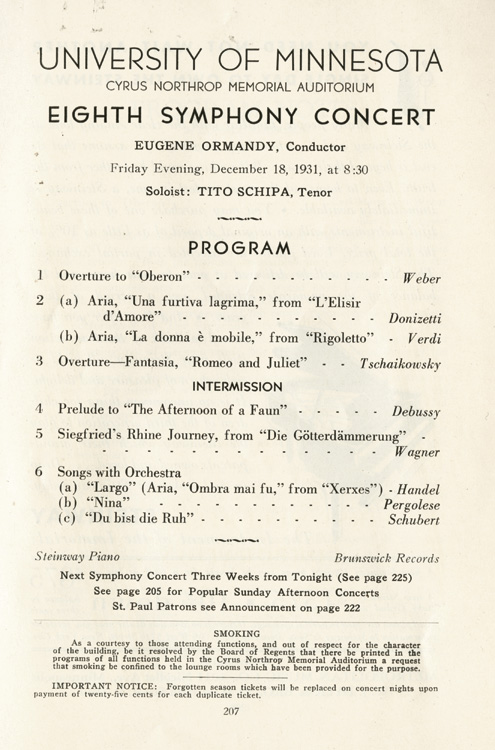Ormandy came to Minneapolis during the Depression, and he recognized the need to program familiar repertory to draw audiences into the concert hall. His new series of "Viennese afternoons," featuring Strauss waltzes, was particularly popular. Yet Ormandy's programming was generally more challenging than what Minneapolis audiences had grown accustomed to under Verbrugghen. A few works outside the usual comfort zone were Schoenberg's Verklärte Nacht, Sibelius's Symphony no. 5, and Aaron Copland's Statements. Ormandy also introduced compositions by several central European composers, including Eugene Zádor, Simon Zemachson, Pancho Vladigerov, Zoltan Kodály, and Ernst von Dohnányi
Ormandy brought several large works to the Minneapolis stage. The 1933 - 34 season saw Verdi's Requiem, Bruckner's Symphony no. 7, and Beethoven's Symphony no. 9, and the following season featured the Minneapolis premiere of Mahler's Symphony no. 2. The Bruckner and Mahler are now staples of the orchestral repertory, but at that time they were considered long, overblown works of interest only to enthusiasts. According to Robert K. Sherman, Ormandy felt the need to address the audience before the performance of the Bruckner and made "an engaging plea for understanding of a neglected artist."
Fig. 2: The program for the eighth subscription concert during his Ormandy's first season featured popular works by Weber, Tchaikovsky, Debussy, and Wagner, and arias sung by tenor Tito Schipa in both halves of the concert.

